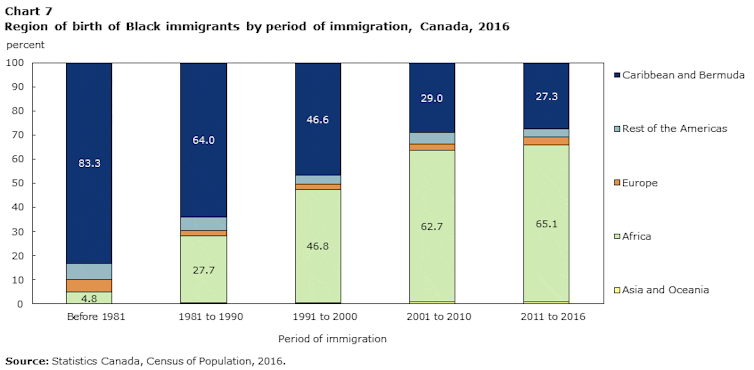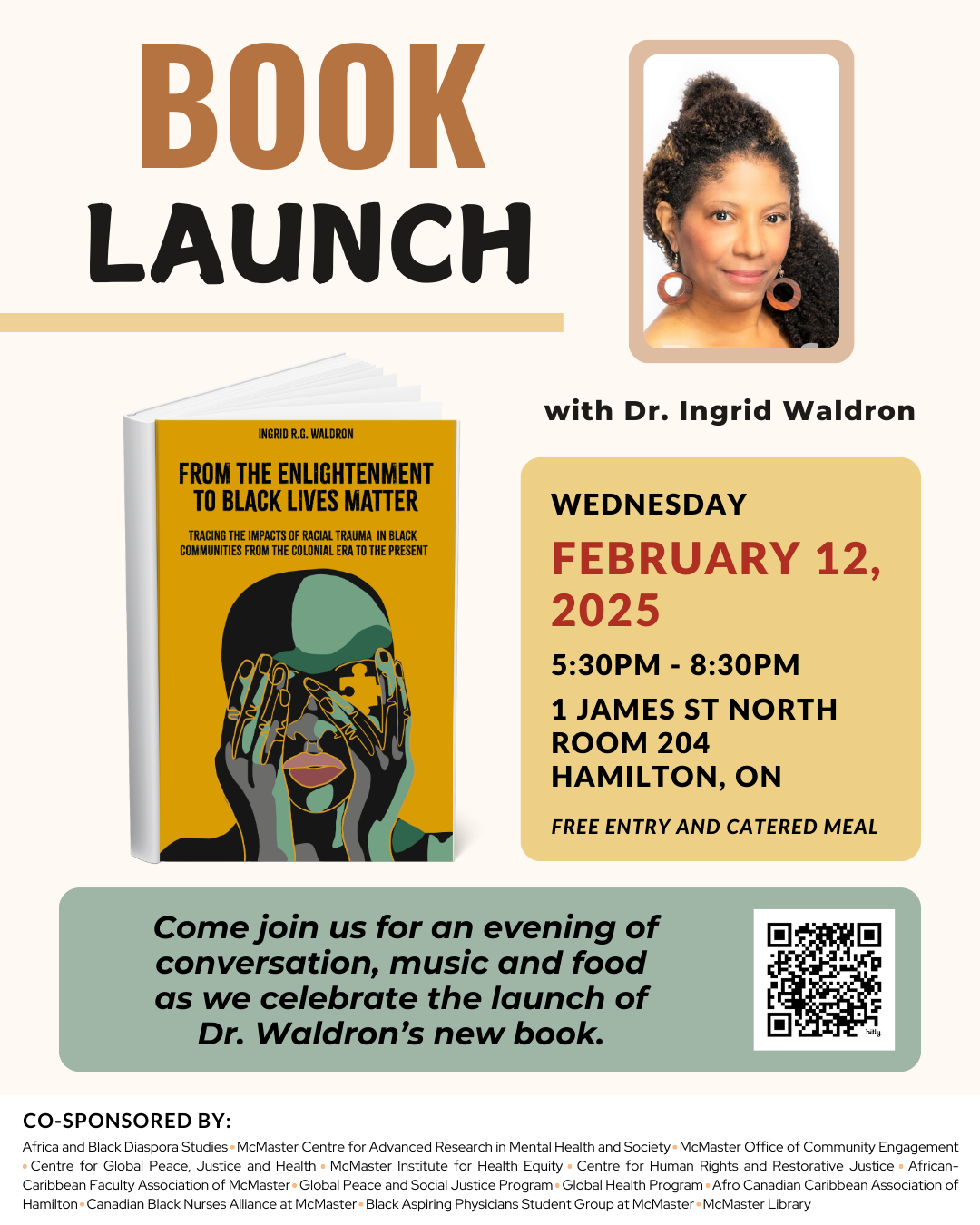![]() This article is republished from The Conversation under a Creative Commons license. Read the original article.
This article is republished from The Conversation under a Creative Commons license. Read the original article.
It seems trite, in 2024, to suggest that the Black population in Canada is diverse. On the surface, this is a relatively uncontroversial point to make and one that most people would agree with. However, are we curious enough about what this diversity actually looks like? Further, what are the implications of reckoning with these nuances as we support and shape Black-focused policies, programs, studies, and spaces? These questions lead us into less certain terrain. Global music star Abel Tesfaye, formerly known as The Weeknd, is arguably one of the most recognizable contemporary Black Canadian figures. Piecing together some of the public details about his background and activities paints a picture that helps us appreciate the textured landscape of Black Canada today. Abel was born in Toronto to Ethiopian immigrant parents and raised in Scarborough — a neighbourhood with diverse Black communities. His music draws on a wide repertoire of Black musical traditions, including R&B and Ethiopian influences and melodies. His recent philanthropy is also notable, including donations to causes such as Black Lives Matter, Ethiopic Studies at the University of Toronto and humanitarian efforts in Tigray (northern Ethiopia). When we zoom in to individual stories like Abel’s, we can appreciate the multifaceted nature of Black Canada and the connections between contemporary and historical processes and events.
Black Canadian histories
Black Studies scholars Peter James Hudson and Aaron Kamugisha remind us that “despite Black Canada’s apparent marginality,” it exists and matters as it relates to our histories, cultures, ideas and politics as a country. The new edited volume Unsettling the Great White North: Black Canadian History by history professors Michele A. Johnson and Funké Aladejebi underscores this point and demonstrates that we can trace Black people to every corner in Canada, across both space and time. There are many historic Black communities in Canada established by people brought by, fleeing and descended from the transatlantic slave trade, including Africville, a Black settlement in Nova Scotia. There was a new and large wave of Black people who arrived from the Caribbean beginning in the 1960s, following the introduction of a point-based immigration system in Canada. Generations of Caribbean communities have made an indelible mark on Canada, from underpinning the health-care system in the 20th century, to solidifying the Jamaican beef patty as an essential staple in the Toronto diet.

This only begins to scratch the surface of the multiplicity of experiences, communities and stories encompassed within Black Canada. Yet even these few details are ones you rarely bump into, but rather have to go searching for on your own. The mainstream discourse around Blackness in Canada often leans too heavily upon American Black history and politics, and/or monolithic depictions of “the Black community.” There is utility and beauty found behind the broad and unifying banner of Blackness. We saw this most starkly during the height of the Black Lives Matter movement, as a diversity of Black people, communities and organizations stood in solidarity and collective pain and grief. While it is important to amplify and stay attuned to these collective identities and movements, it should not be at the expense of attention to the details of this bigger picture.
New waves of immigration
Statistics Canada census data from both 2016 and 2021 captures changes that were already apparent to many of us living alongside, working with or paying attention to Black people in Canada. Demographics have shifted considerably, owing in large part to new waves and patterns in immigration trends. To begin with, the Black population in Canada is growing rapidly — from 573,000 in 1996 to 1.5 million in 2021. Around 60 per cent of Black people in Canada were born abroad. While earlier generations of Black immigrants were mostly from the Caribbean, more recent immigrants are coming from African countries, including Nigeria and Ethiopia. This is also shifting broader national demographics, as Africa is now the second largest source continent representing recent immigrants in Canada.

These migration patterns are more than footnotes in Black Canadian history. This diversity intersects with vastly different migration pathways and immigration statuses, class differences, unique cultural and linguistic influences, a multitude of religious traditions, as well as a variety of local and transnational social and political practices.
Diversity of Black experiences
We need the language, and quite frankly the attention span, to make sense of these unique Black trajectories and stories in Canada. For example, experiences and insights coming from the Somali diaspora community in Etobicoke are likely different than long-established Black communities in Halifax. Also, despite living with the unifying experience of encountering anti-Black racism, new Black Canadians who arrive as economic migrants may benefit from resources and privileges unavailable to Black folks who grew up in structurally-induced intergenerational poverty. There is also so much to make note of as far as how Blackness itself is being made and remade in Canada through these shifting tides. Eden Hagos is a young Black-Canadian entrepreneur and founder of the online food and culture platform Black Foodie. Hagos was inspired to become an advocate for Black food and culture after experiencing a racist incident at a European restaurant in Toronto. When you peruse Black Foodie content (including her merchandise donning phrases such as “Injera + Chill” and “Jollof + Chill”), you see that Hagos’s expression of Blackness is filtered through her East African roots, and her culinary routes through various African, Caribbean and Black American traditions. If we care to make Black communities more visible and amplify their voices and demands for change and belonging, it is critical we also tune into these diversity of experiences and perspectives. We should take care to ensure the hard-earned policies and initiatives intended to combat the legacy of anti-Black racism in Canada are extended throughout Black communities, and not just to those who have the easiest access to them. In public discourse and national remembering, we need to continue the project of raising consciousness around the stories of historic Black communities while also drawing attention to contemporary diasporic communities, like the forthcoming book by sociologist Sam Tecle does. From an academic perspective, Black Studies in Canada also needs to make note of and engage with this diversity of experience. It should foster a new set of research questions and curricula that reflect this dynamism and diversity. While concepts like “Black Canada” are useful blanket terms and an important organizing identity, a closer look reveals a detailed and fascinating tapestry that also deserves to be put on display.
![]()
Alpha Abebe, Assistant Professor, Faculty of Humanities, McMaster University This article is republished from The Conversation under a Creative Commons license. Read the original article.




